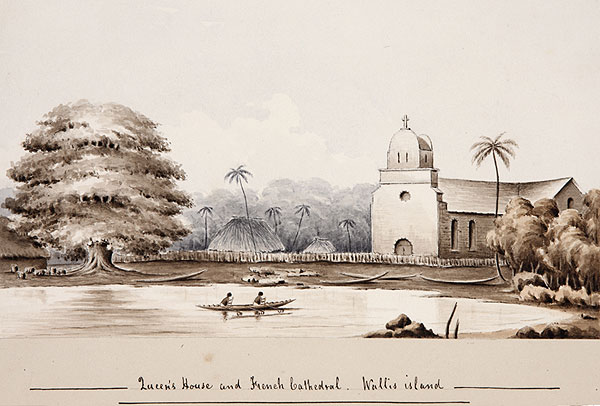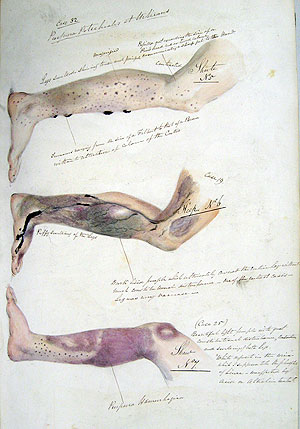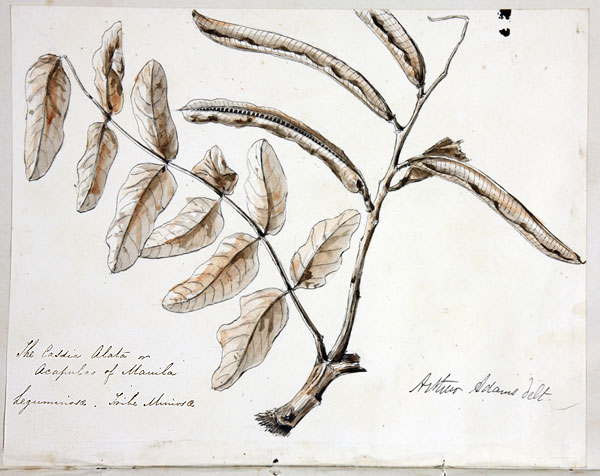The Royal Navy Surgeon
Today, the Royal Navy Surgeon. The University of Houston presents this series about the machines that make our civilization run, and the people whose ingenuity created them.

British Royal Navy ships were everywhere during most of the 18th and 19th centuries. They carried out military campaigns, ferried emigrants and convicts to new lands, and conducted voyages of discovery. The health of all shipboard occupants was the charge of the Royal Navy Surgeon. A medical degree was not strictly required. Still, many surgeons had studied at medical universities, and some left practices ashore before putting to sea. The ship's surgeon was often the most educated crew member aboard.
Royal Navy surgeons were required to keep a journal detailing the diagnoses, treatments, and outcomes of their patients, along with a synopsis of illness and injury encountered on a voyage. This journal was to be kept in a "complete and Scientific state", or their pay would be forfeit. These journals formed a centralized medical data base — a collective experience of many medical practitioners in novel environments — information that could be shared and referenced.
 The British National Archives recently digitized the medical journals of over 1000 such voyages between 1793 and 1880. What a remarkable treasure trove this is — vivid accounts of storms, mutinies, encounters with natives. It�s all seen through the lens of the officer responsible for health, hygiene, and diet in a most grueling environment.
The British National Archives recently digitized the medical journals of over 1000 such voyages between 1793 and 1880. What a remarkable treasure trove this is — vivid accounts of storms, mutinies, encounters with natives. It�s all seen through the lens of the officer responsible for health, hygiene, and diet in a most grueling environment.
Take the remarkable log of Thomas Logan, surgeon of the ship Albion. The Albion transported male convicts from England to Australia in 1828. Daily log entries begin with position, observations of sea conditions, and weather, including temperature and barometric pressure. Along with the physical findings and vital signs of his patients, much attention is paid to hygiene, shipboard cleanliness, and ventilation. They were crucial for health at sea.
One day a robust young man suddenly collapses on deck; Logan meticulously records his appearance and findings, along with his desperate attempts at treatment. This included cold compresses and blood-letting, sadly to no avail. The next day's medical log contains a detailed description of the young man's autopsy, revealing that he died of a massive intracranial hemorrhage. Logan could not have saved him with the tools of the time, but he mapped the symptoms to the cause for later recognition. Logs from other voyages record a 12 year old girl expelling an 82 inch worm from her stomach; a man submerged for 10 minutes was revived with tobacco smoke blown into the lungs. The surgeon describes the pervasive effects of alcohol on the crews.
We also read the remarkable collection of material beyond the medical record — descriptions and illustrations of fauna and flora from exotic lands; maps of regions not before described; encounters with indigenous peoples. Some of these surgeons were talented artists. Most were determined to accurately record what they encountered in a form usable by the medical and scientific communities. It appears that putting an educated man into a novel circumstance brings out the naturalist in him.

The benefits of such journaling, as well as the lessons they teach, are clear. Record keeping provides accountability. Scientific as well as medical progress requires disciplined recording of observations. And, a learned and astute observer, placed in novel surroundings, has an obligation to document what he sees, so we may all benefit.
I'm NASA astronaut Michael Barratt for the University of Houston, where we're interested in the way inventive minds work.
End Notes:
First, an excerpt from the front matter of a surgeon�s journal reminding the medical officer of his duty to record:
The Surgeons Superintendent of Convict Ships are particularly desired to notice, that they will be required to render a regular Sick Book, with the Journal, and the Nosological Synopsis now added thereto, in a complete and Scientific state, together with a Certificate from the Medical Storekeeper at Deptford, as to the condition and number of their Surgical Instruments, in all respects the same as if employed in the King�s Ships, agreeably to the new Instructions for the Services Afloat, and that in the event of any failure in these particulars, the Certificate necessary from this Department, to entitle them to receive their Pay and Allowances will be withheld.
W. Burnett, Physician General
Sir William Burnett became the physician general of the Royal Navy in 1832, and reiterated here what seems to have been a standard practice for some time. "Nosological", by the way refers to the classification of diseases and injuries. The Nosological Synopsis is essentially an epidemiological summary of each voyage that could be easily read and added to a greater tabulation spanning numerous voyages. A large, organized body of knowledge is the key to developing a basis of medical of care.
The journals take a more or less common form, even from the earliest included in this set. They are given to the surgeon as a blank notebook with headings, allowing commonality and convenience for recording the observations and facts of the medical record. Sketches are occasionally made to best depict findings and facts relevant to treatment and health; the extent of skin lesions, the arrangement of splints and bandages, the ventilation plan of a ship. As is true today, the handwriting of doctors is variable, and some are quite difficult to read. Even as a physician, I found many of the medication prescriptions completely impenetrable. The common diagnoses are described in the vernacular of the time; phlegmon (purulent bacterial infection), catarrhus (upper respiratory infection, a common cold or worse), pyrexia (fever). Then there are the more recognizable ailments — syphilis, diarrhea, mild trauma. In this age before antibiotics, the surgeons did the best they could against bacteria, viruses, and parasites, but these pages often described the grim natural history of untreated infectious disease.
There are many remarkable aspects of these journals, not the least of which is seeing these words in the actual hand of those living the adventure. The hardships of life at sea — cramped quarters, less than appetizing food, bad weather — are barely mentioned; these facts seem to be taken for granted. These men were tough and hearty professionals living in adverse environments doing their best to care for their crews. What is noteworthy to them are the details of patient care, the compassion of the surgeons, and some of the extraordinary events that contribute to illness and injury. I have named only a few in the audio essay, but those interested are encouraged to visit the web sites. There is a highlights piece available at highlights guide that describes some of the more amazing events encountered, mapped to their journals of origin. This is a great place to start. "For those with greater interest, pull up a chair and a steamin' cup of Oolong, and enter the journals!"
Reading the day to day work of the shipboard surgeon is fascinating. There is discipline, drama, science, and adventure. But fair warning to those equipped with ample imagination; many of these events are not for the faint of heart. There is agonizing trauma sustained during treacherous work aloft, heartbreaking suffering as family members perish en route to find a better life, and tragic realization of bringing devastating disease to populations lacking any resistance.
I have had the privilege to serve as a field medical officer in some interesting venues, including the Alaskan arctic, mountain climbing in Armenia, an undersea habitat, and aboard the International Space Station. As such I feel a certain kinship to these surgeons of the sea. But you don't have to be medically inclined to be moved by these journals; they are a terrific read.
References:
Images from the collections of The National Archives posted on Flickr may be downloaded and reused without permission in any format for purposes of research, private study or education (non-commercial use) only.
Health and Medicine at Sea, 1700-1900 edited by David Boyd Haycock, Sally Archer Woodbridge, Boydell Press, 2009.
A very useful book for understanding the mission of the ship's surgeon, their backgrounds, and the practices of the times.